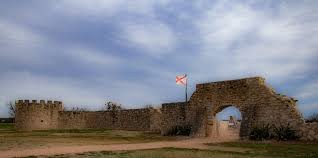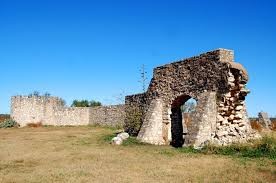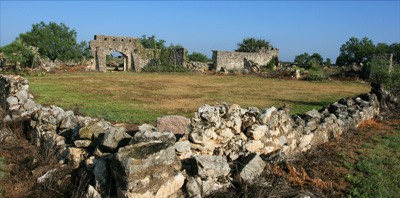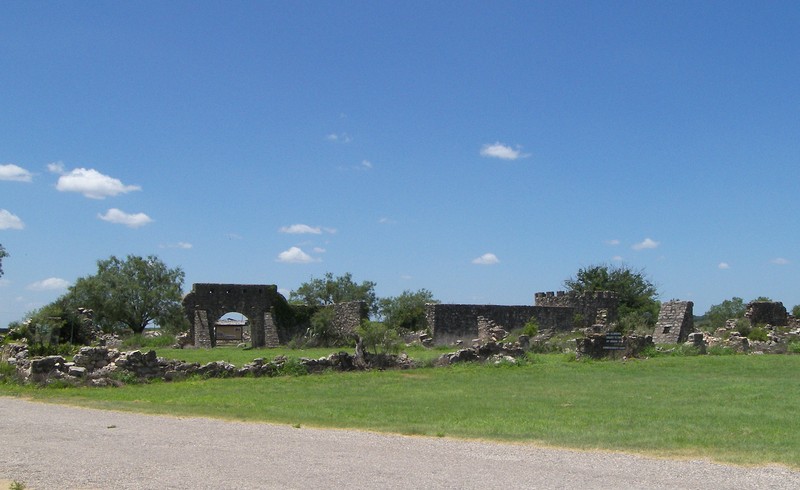Presidio de San Saba
Introduction
Text-to-speech Audio
Images




Backstory and Context
Text-to-speech Audio
Presidio de San Saba was founded in April of 1757. It was built by a Spanish force led by Captain Don Diego Ortiz Parilla. Presidio de San Saba was built to protect territory that the Spanish were interested in, Native expansion, and to explore the area for silver deposits that were rumored to be in the area.
For the time being, Presidio de San Saba was the largest military installation in Texas. The mission that was being protected by Presidio de San Saba; Mission Santa Cruz de San Saba was built a few miles downstream of the Rio Grande River. Its purpose? To Christianize Lipan Apache.
The relationship between the Apache and Spanish is interesting. From one perspective the Spanish are in a way trying to help the Apache Indians by offering them missions to settle in and converting them to Christianity. Another perspective is that the Apache Indians are hesitant in the intentions of the Spanish and much rather hunt and fight their enemies. Presidio de San Saba is not only historical for its size but as well as giving us a perspective on how race and ethnicity were viewed in the 1700s.
As stated before, the relationship between the Spanish and Apache is interesting. Spanish missions were known to be attacked by the Apache until peace was agreed upon by both in 1794. A mission was requested by the Apache as well as becoming allies with the Spanish and protection from their enemies.
Therefore, Presidio de San Saba and its mission were created. Apache Indians became uninterested in the mission and missionaries as they were too busy hunting buffalo and fighting enemies. Captain Diego Ortiz Parilla wrote in 1758, “The Apaches were evidently unimpressed by the strength of the new presidio, for they quite refused to settle at the mission. Indeed, the whole establishment stood like bait at the very edge of the Comanche territory.”
Although efforts to have Apache settle in the mission failed, construction kept going and the presidio and mission were built. On March 16, 1758, the mission located downstream of Presidio de San Saba was surrounded by Comanche and other Native tribes. Although no Plain Indians lived at the mission, the tribes looted and burned the mission, killing residents, missionaries, and priests in the process. The mission was abandoned but Presidio de San Saba still stood.
The Comanche and other tribes saw this as a victory against longtime enemies while the Spanish thought it was a massacre. Spanish in retaliation, held an expedition to attack the Comanche. Expedition held by Colonel Diego Ortiz Parrilla was successful in attacking northern natives with the help of Apache and Spanish soldiers as far as San Luis Potosi. The Spanish fell after encountering a strong Wichita village. The Indians lured Ortiz into an ambush and after suffering 19 deaths and a four-hour battle, retreated.
The presidio commander was later let go of command and replaced. The Presidio was replaced with a stone compound, sending a message to the French and Indians that they are here to stay. Unfortunately, in 1768, the presidio was completely abandoned, and territory was left to the Comanche and their allies.
The original site of Mission Santa Cruz de San Saba was lost, and Presidio San Saba fell into ruins. During the 1800s the presidio was used to hold cattle since it was located near the San Saba River. Portions of the presidio remain while others were rebuilt by The Works Progress Administration for the Texas Centennial in 1936.
Sources
https://texasfortstrail.com/plan-your-adventure/historic-sites-and-cities/sites/presidio-de-san-saba
Gilmore, Kathleen Kirk. San Luis de las Amarillas, Handbook of Texas. Accessed March 6th, 2021. https://www.tshaonline.org/handbook/entries/san-luis-de-lasamarillas-presidio.
Menard:Presidio de San Saba, Forts Trail Region. Accessed March 5th, 2021. https://www.legendsofamerica.com/presidio-de-san-saba-texas/.
Cooper, Elizabeth. Presidio San Saba, Texas Beyond History. Accessed March 5th, 2021. https://www.texasbeyondhistory.net/presidio/index.html.
Weiser-Alexander, Kathy. Presidio de San Saba, Menard, Texas, Legends of America. Accessed March 5th, 2021. https://www.legendsofamerica.com/presidio-de-san-saba-texas/.
